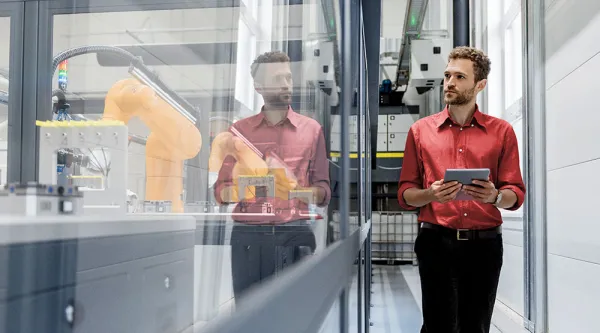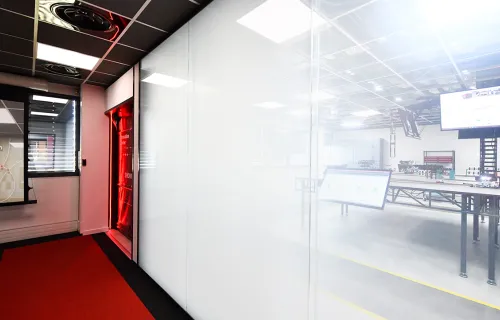In my previous blog, I discussed the pressing need to address sustainability that many industries, especially manufacturing, face today. Stakeholders are placing a stronger emphasis on achieving net-zero carbon emissions. Investors are demanding sustainability information to make investment recommendations and decisions. Additionally, stringent government regulations are further accelerating the urgency to achieve carbon neutrality.
The growing global pressure from government, financial institutions and consumers will soon make sustainability mandatory, pushing it higher on the C-suite agenda. For manufacturers, this means weaving sustainability into the very fabric of their DNA. It also means acknowledging an inescapable reality: What we produce and supply makes a big difference — not only to the communities in which we live and work, but also to our organizations’ bottom lines.
Yet, it remains a complex and multifaceted challenge. Can manufacturers be sustainable and profitable at the same time? With smart factories, they can be both.
What is a smart factory?
At CGI, we view smart factories as a concept that describes an intelligent, digitally connected plant that the applies and integrates advanced technologies to achieve the goals of Industry 4.0. Automation, industrial IoT, cloud computing and data analytics all play a critical role in creating a fully connected smart factory that runs on digitally supported insights and decision making. Each of these elements also is pivotal to achieve your sustainability goals.
Gaining awareness using IoT and data
The first step to achieving any goal is understanding where you currently are. This is true for sustainability too. Achieving true sustainability or carbon neutrality needs to go beyond “hope and intention.” Facts are critical; without facts, it’s a guessing game. Collecting and understanding the right data points allows you to become acutely aware of the current factory landscape, giving you the insights needed to start making the necessary changes.
IoT and data analytics go hand-in-hand to achieve this. Manufacturers need to become acutely aware of the inner workings of their factories; they need to understand their assets, recognize how these assets work, and determine by which parameters the assets need to perform to achieve efficiency. Manufacturers cannot achieve this without IoT. However, many assets are old and lack the ability to communicate their current status and “vitals.” Smart sensors can bring these assets to life and open a window into their operating behaviors. They provide the ability to measure many data points in real-time, such as heat, energy consumption, pressure and output, among other key sustainability indicators.
Once these vitals are tracked and communicated, a smart factory can then store these data points in a data lake. By applying data analysis, machine learning and even artificial intelligence on this data, manufacturers can begin to gain a much deeper understanding of what is happening on the production and operational levels within the factory. With this insight, real change, in the right direction, is possible. It is perhaps no surprise that insights from the 2021 Voice of Our Clients reveal that this year, 74% of manufacturing executives say the use of advanced artificial intelligence technologies is a top spend trend impacting IT budgets.
Beyond the hype to real-life outcomes
The pairing of IoT and data analysis offers many benefits for improving sustainability results while reducing cost at the same time. For instance, our experts helped a large steel manufacturer use data analytics to optimize their production processes, resulting in a reduction in the amount of materials needed, lower wastage and significant energy savings. Similarly, we helped a brick manufacturer become more efficient with their drying process (that can require temperatures above 1,000 °C) by using IoT and data analytics to optimize their parameters.
Once you start tracking the “vitals” of your assets, dashboards can then help operators keep tabs on how the assets are performing and how much energy they are using. In addition, intelligent models can help develop “the best case” approach for energy-efficient manufacturing.
For example, the manufacturing process in a chemical plant requires a lot of steam, water and electricity. Mindful of the environmental impact, our client was looking for ways to reduce their energy usage across the plant. We implemented a solution to store the gathered IoT data and feed it through data models to calculate the optimum operating parameters. We provided dashboards that gave the operator insight into the real-time “state” of the system and trends. The dashboards also provide alerts when values fall outside preset limits.
These insights are essential for the transparency and reporting of sustainability efforts.
Automation is another critical next step for sustainable manufacturing. Not only does it allow manufactures to reduce their operating costs, but with more streamlined processes and shorter production cycles, it also helps reduce their energy consumption and wastage.
Sustainable clouds
Data servers consume huge amounts of energy. Some estimates suggest that data centers will account for 3-13% of all electricity consumption by 2030. As data becomes a key enabler for manufacturers to optimize operations and improve competitiveness, data volumes will only grow. On the flip side, more data means more emissions.
Manufacturers are looking to cloud-based production for improved flexibility, quicker time to market with new services and tools and reduced costs. With cloud manufacturing, they also are rethinking their data center strategy to reduce energy emissions significantly. With the shared use of clouds, the energy demand from private data centres will decrease. Moreover, cloud computing is designed for high utilization and built for energy efficiency. Smart manufacturers who move their IT operations to the cloud can benefit from decreased energy consumption levels.
Protecting more than just data
A comprehensive operational technology (OT) security framework protects your factory not just from cyber threats but also from the consequences those threats may have on your physical environment. Whether from targeted attacks on volatile mines or accidental internal incidents, a robust OT security program helps effectively monitor and safeguard your physical assets, preempting any damage to the plant or its environment.
Take the example of a chemical plant that processes and transports highly flammable or toxic material. If the OT system fails or a particular asset leaks, it can have huge environmental consequences. In such potentially hazardous environments, real-time tracking of asset health is critical, not just for production but also for the safety of the plant and its workers.
Smart factories are the way forward
Smart factories offer manufacturers numerous benefits, including improved operations efficiency, productivity, product quality, inventory management, asset utilization, time to market, agility and workplace safety. Smart factories also enable data-driven insights and decisions to support your sustainability goals.
Get in touch with me to learn how we can help you transform into a smart factory, ensuring your production, supply chain and operations are at the highest sustainability levels to benefit your bottom-line and the planet.






